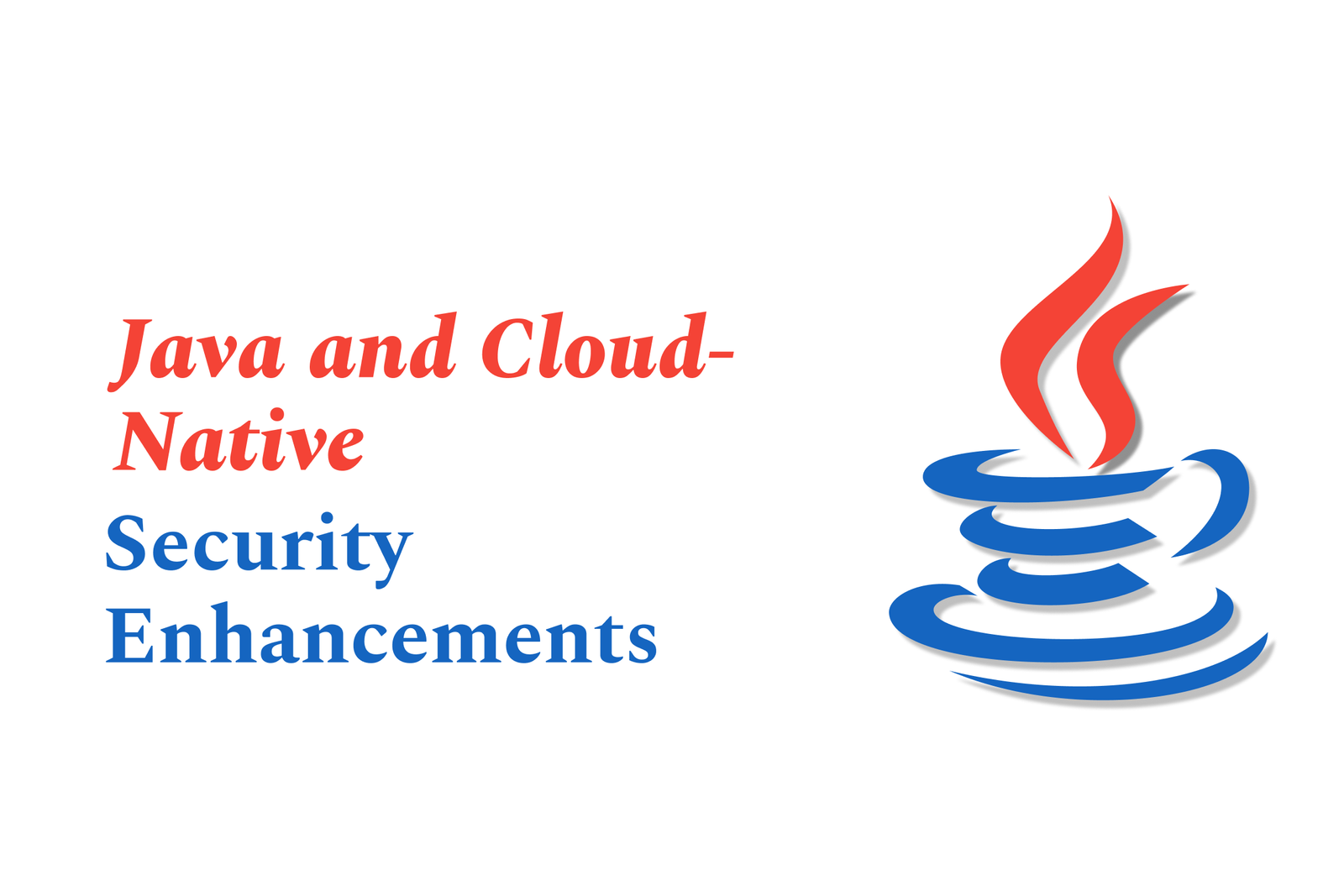Java and Cloud-Native Security Enhancements
Java, a key language for cloud-native apps, embraces enhanced security through integrated tools, secure coding practices, and seamless support for container and cloud platforms, enabling developers to build resilient, secure applications aligned with modern cloud-native security frameworks.
Java and Cloud Native Security Enhancements
1 ) Introduction to Cloud Native Security
Cloud native security integrates security into the cloud native application development approach.
It demands holistic attention across infrastructure, teams, and processes.
Goal: Ensure applications detect and remediate vulnerabilities effectively within cloud environments.
Security must be embedded throughout the software development lifecycle (SDLC).
Developers bear the responsibility to write secure code and adhere to cloud native design principles.
2 ) The Four C’s of Cloud Native Security
To organize cloud native security, the ecosystem is divided into four layers:
Cloud Layer: Infrastructure managed by cloud service providers (CSPs) with shared security responsibilities.
Container Layer: Container runtime and orchestrations like Kubernetes.
Cluster Layer: Management and security of container clusters.
Code Layer: Application code security focusing on secure coding and vulnerability remediation.
Each layer encompasses unique security challenges requiring dedicated strategies.
3 ) Key Security Challenges and Strategies by Layer
Cloud Layer:
Vulnerabilities mainly arise from misconfigurations such as unchanged defaults, weak admin console protections.
Automation may propagate configuration errors rapidly if unchecked.
Solutions include following CSP best practices, auditing configurations, and utilizing Infrastructure as Code (IaC) to minimize errors.
Cluster Layer:
Kubernetes clusters demand focus on access control, internal network policies, and workload protection.
Proper role based access control (RBAC) and network segmentation are critical.
Governance of cluster components reduces attack surface and isolates potential breaches.
Container Layer:
Containers must be secured at build, deploy, and runtime phases.
Security scanning for container images and runtime behavior monitoring help mitigate risks.
Ensuring minimal privileges for container processes is essential.
Code Layer:
Secure coding practices and integrating security testing within developer workflows ensure safer applications.
Tools embedded in IDEs, local testing, and continuous integration pipelines enable early vulnerability detection.
4 ) Cloud Native Security Enhancements with Tools and Practices
Integration of security platforms that provide actionable insights tailored for developers.
Use of command line interfaces (CLI) and IDE plugins to surface security issues during development.
Automated failover, workload replication, and disaster recovery enhance resilience.
Role based access controls, multi factor authentication, and encryption safeguard data and processes.
Monitoring, observability, and compliance tools aid in ongoing security posture assessment.
5 ) Java’s Role in Cloud Native Security
Java remains a leading language for developing cloud native applications due to its robustness and vast ecosystem.
The latest Java SE releases incorporate improvements enhancing security and performance.
Java developers are encouraged to embrace secure coding standards and utilize cloud native security practices.
Java tools and frameworks increasingly support integration with cloud security platforms and container orchestration environments.
6 ) Conclusion
Cloud native security is a shared and layered responsibility addressing infrastructure, platforms, containers, and code.
Adapting to this security model enables organizations to protect cloud workloads against emerging threats efficiently.
Combining Java’s capabilities with cloud native security best practices empowers developers to build resilient, secure applications in modern cloud environments.
https://justacademy.in/news-detail/java-developer-salaries:-trends-and-insights-2025
https://justacademy.in/news-detail/best-companies-hiring-flutter-devs
https://justacademy.in/news-detail/react-native-expo-sdk-48-brings-massive-productivity-boosts
https://justacademy.in/news-detail/react-native-in-2025:-what-developers-are-excited-about
https://justacademy.in/news-detail/react-native-0.75?s-most-exciting-features-?-full-breakdown
Related Posts
In 2025, top Angular libraries offer modern, feature-rich components and tools for building dynamic web apps. From powerful data grids to low-code platforms like UI Bakery, these libraries enhance development speed, UI design, and scalability, making them essential for Angular developers.
Migrating from AngularJS to Angular 17 involves gradually upgrading your app by running both frameworks together using tools like ngUpgrade, rewriting components in TypeScript, and adopting Angular’s modern architecture to enhance performance, maintainability, and long-term support.
Angular state management tools help organize and handle app data efficiently, improving scalability and maintainability. Popular options include NgRx for robust, RxJS-based patterns, and newer Signal Store solutions that offer simpler, reactive approaches integrated tightly with Angular’s latest features.
RxJS in Angular empowers developers to manage asynchronous data streams with powerful operators like `forkJoin`, `combineLatest`, and `zip`. Mastering these key operators in 2025 is essential for building efficient, reactive applications that handle complex event sequences seamlessly.
Angular performance optimization in 2025 focuses on improving app speed and responsiveness by using techniques like OnPush change detection, lazy loading, efficient data caching, and AOT compilation. These practices reduce load times, enhance user experience, and ensure scalable, fast Angular applications.
In 2025, Angular remains preferred for large-scale, enterprise apps with its robust, all-in-one framework, while Vue attracts developers seeking simplicity and fast development for smaller projects. Both frameworks excel, with choice driven by project needs and team expertise.
Angular Signals are a new reactive primitive in Angular 16 that enable fine-grained, efficient change detection by automatically tracking dependencies and updating only affected parts of the UI. They simplify state management and boost app performance, revolutionizing Angular's reactivity model.
Angular interview questions to prepare in 2025 focus on core concepts like components, directives, data binding, routing, and dependency injection, along with TypeScript mastery and latest Angular features to ensure strong practical knowledge for building scalable, efficient web applications.
AngularJS reached its official end of support in January 2022, meaning no further updates or security patches. To ensure app security and performance, developers should consider migrating to modern Angular versions or seek third-party long-term support options if immediate migration isn’t possible.
The Angular Roadmap 2025 highlights upcoming features focused on improving developer experience and performance, including zoneless Angular, Signals integration, enhanced Forms, async data handling, improved HMR, and expanded Angular Material/CDK enhancements, driving modern, efficient web app development.










